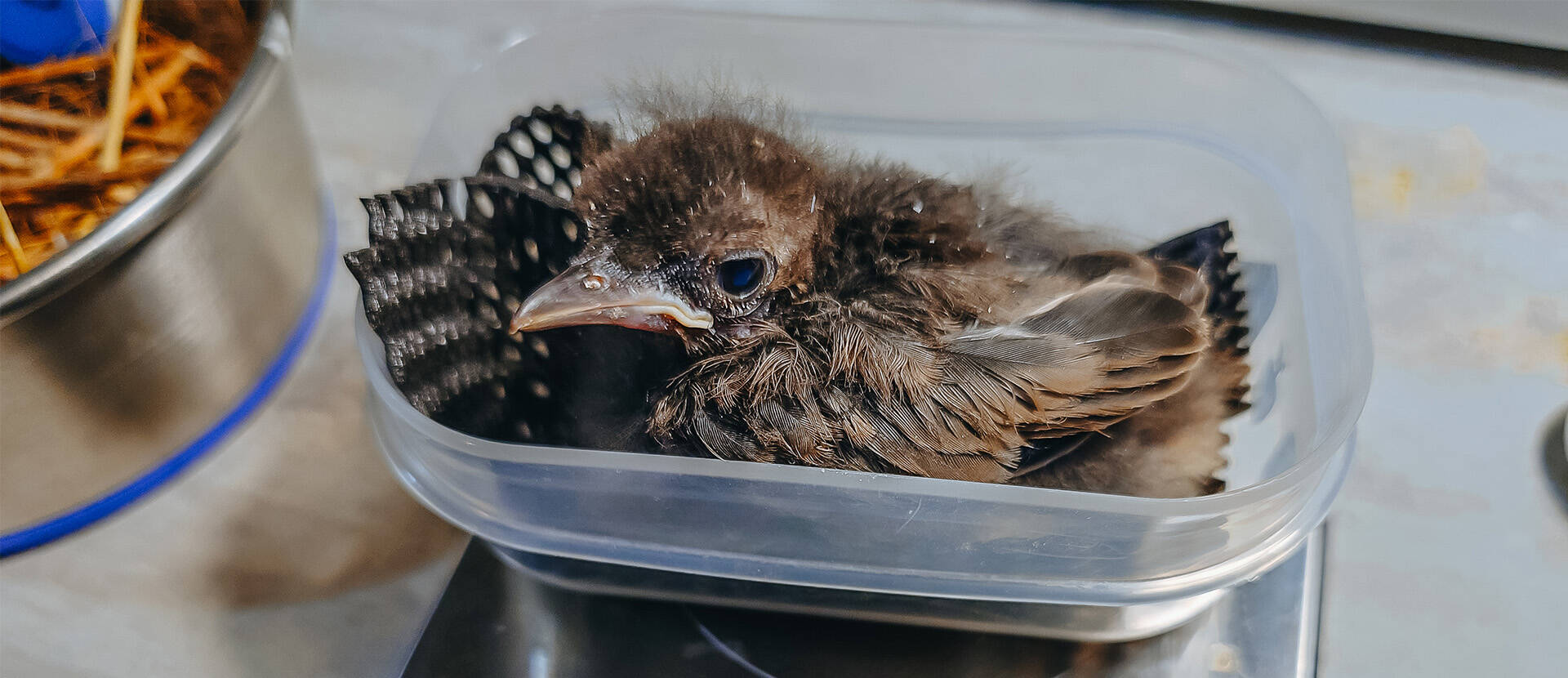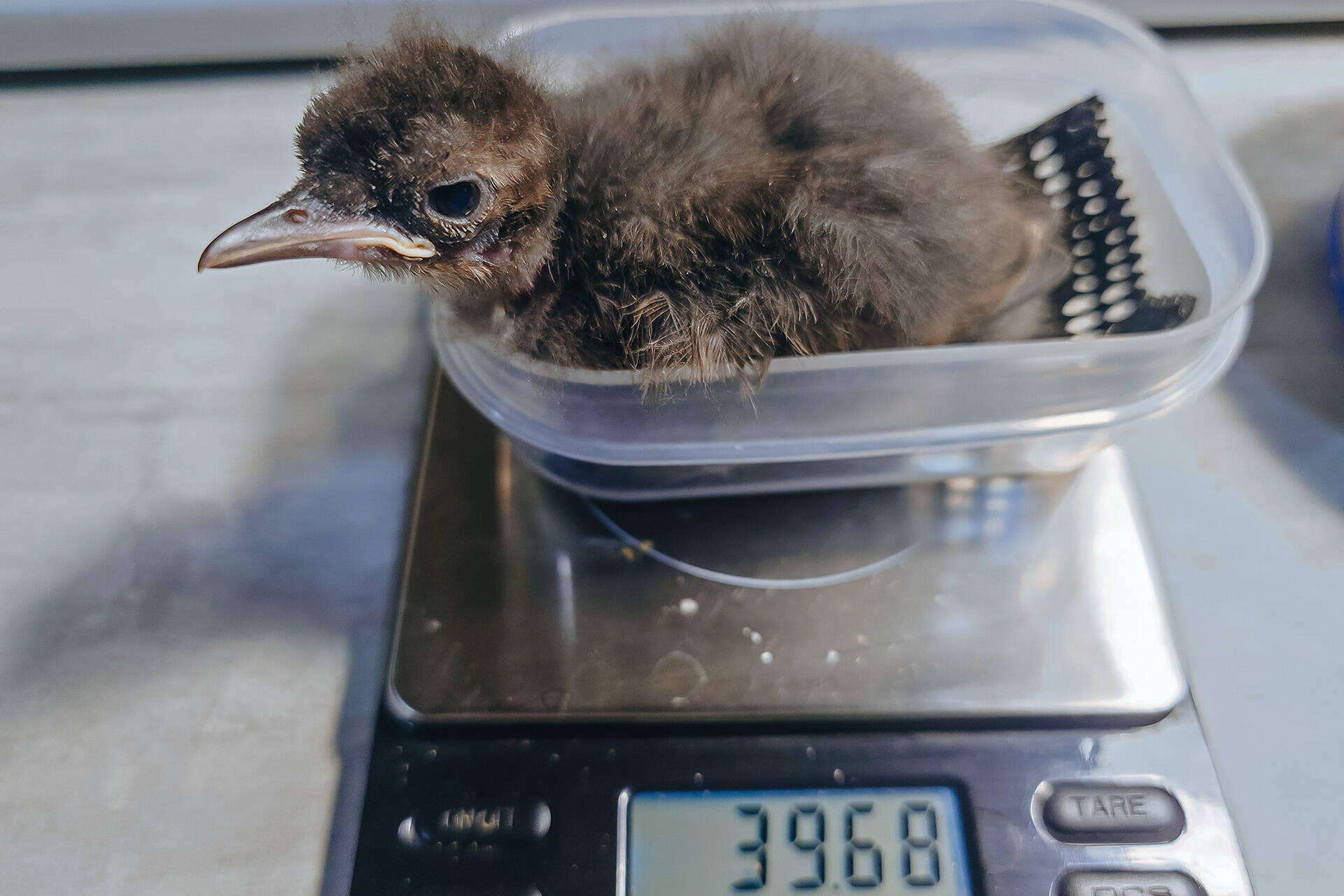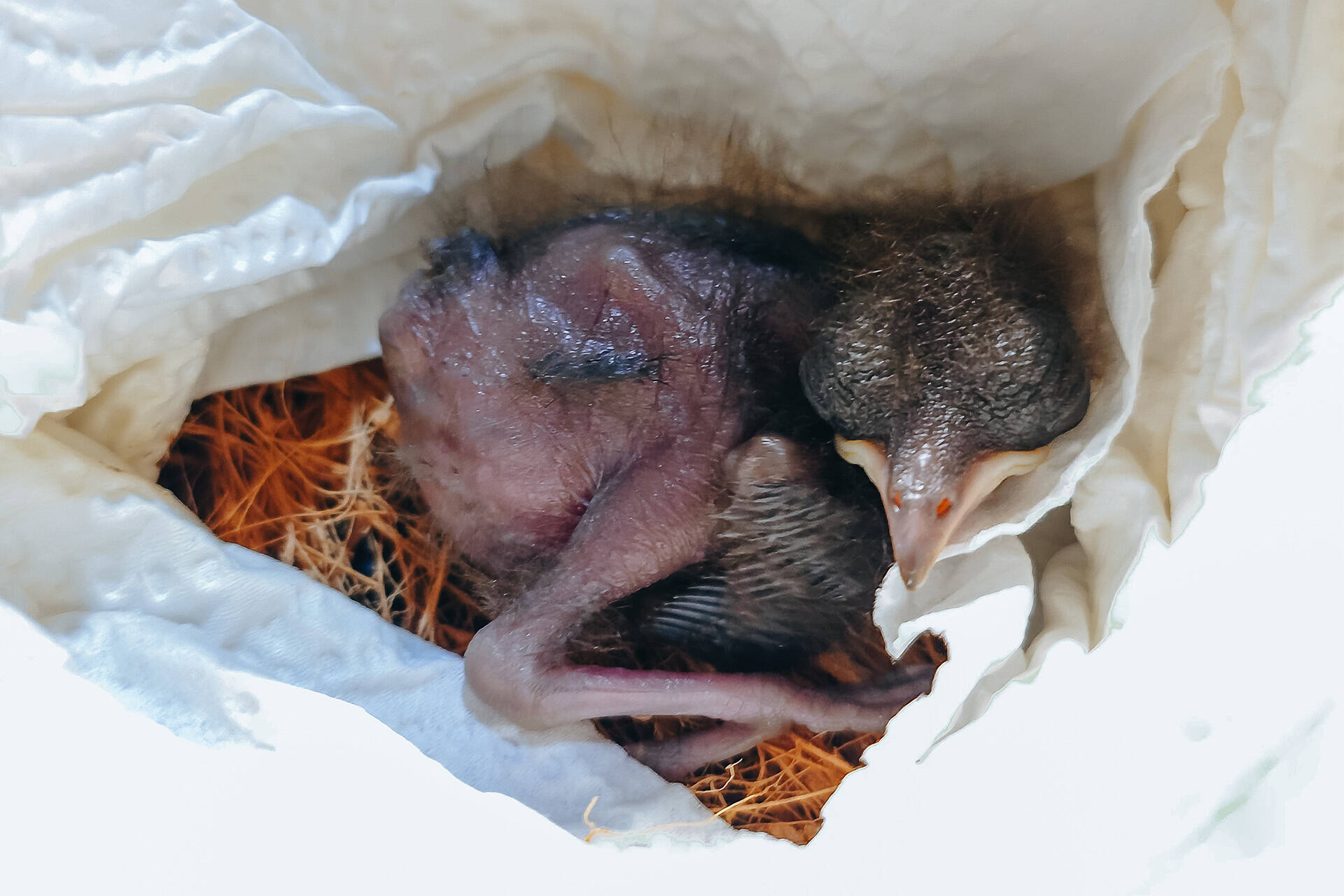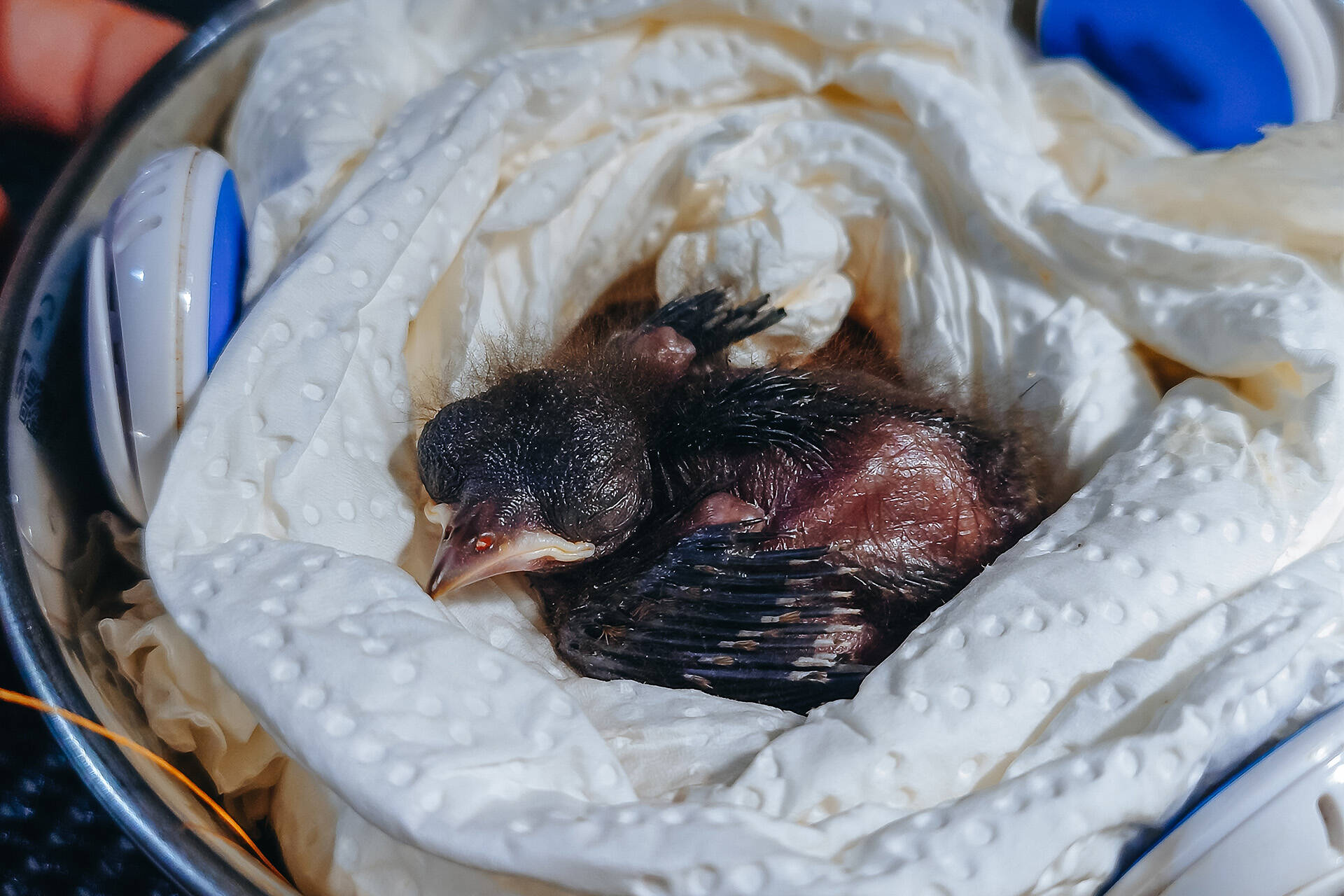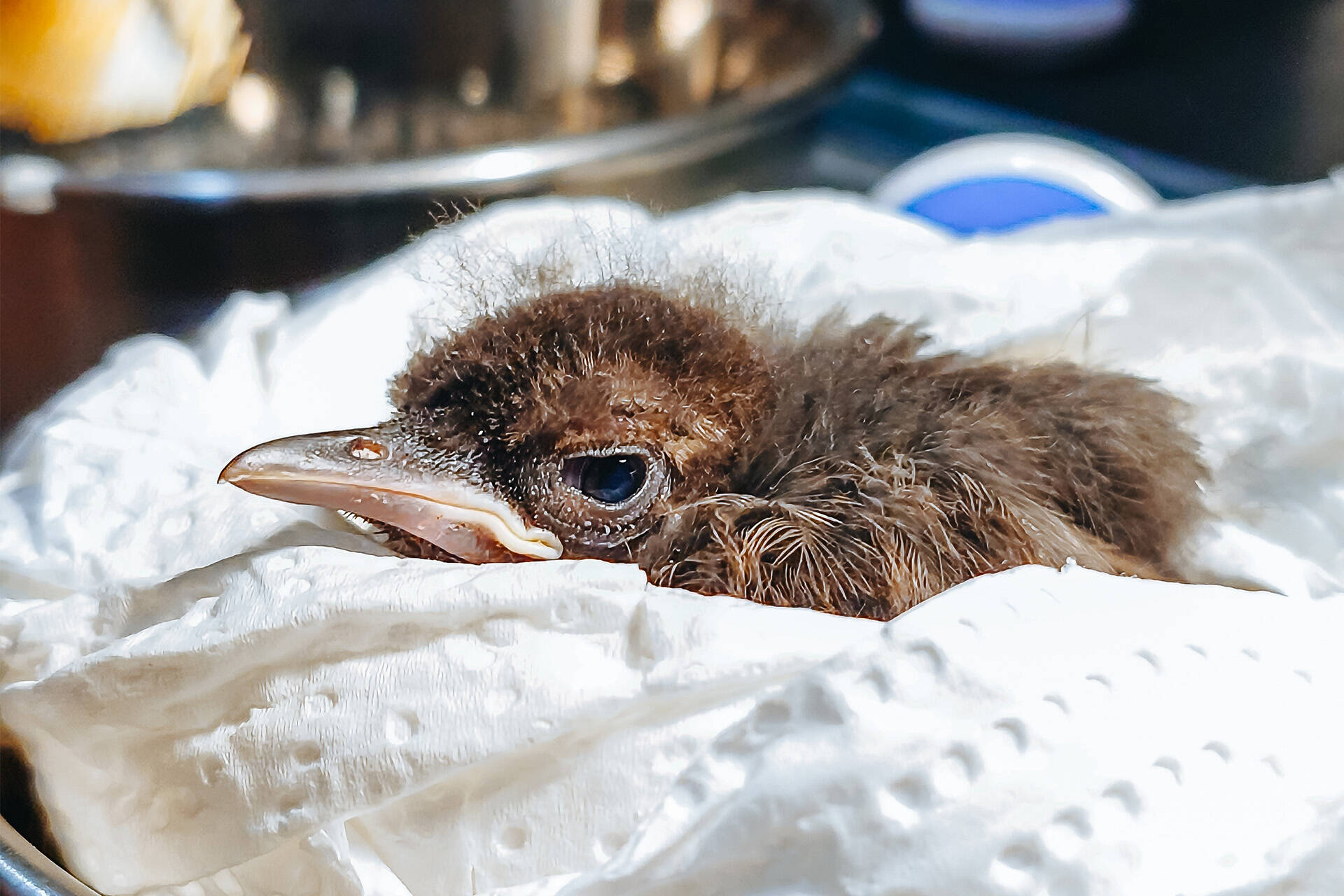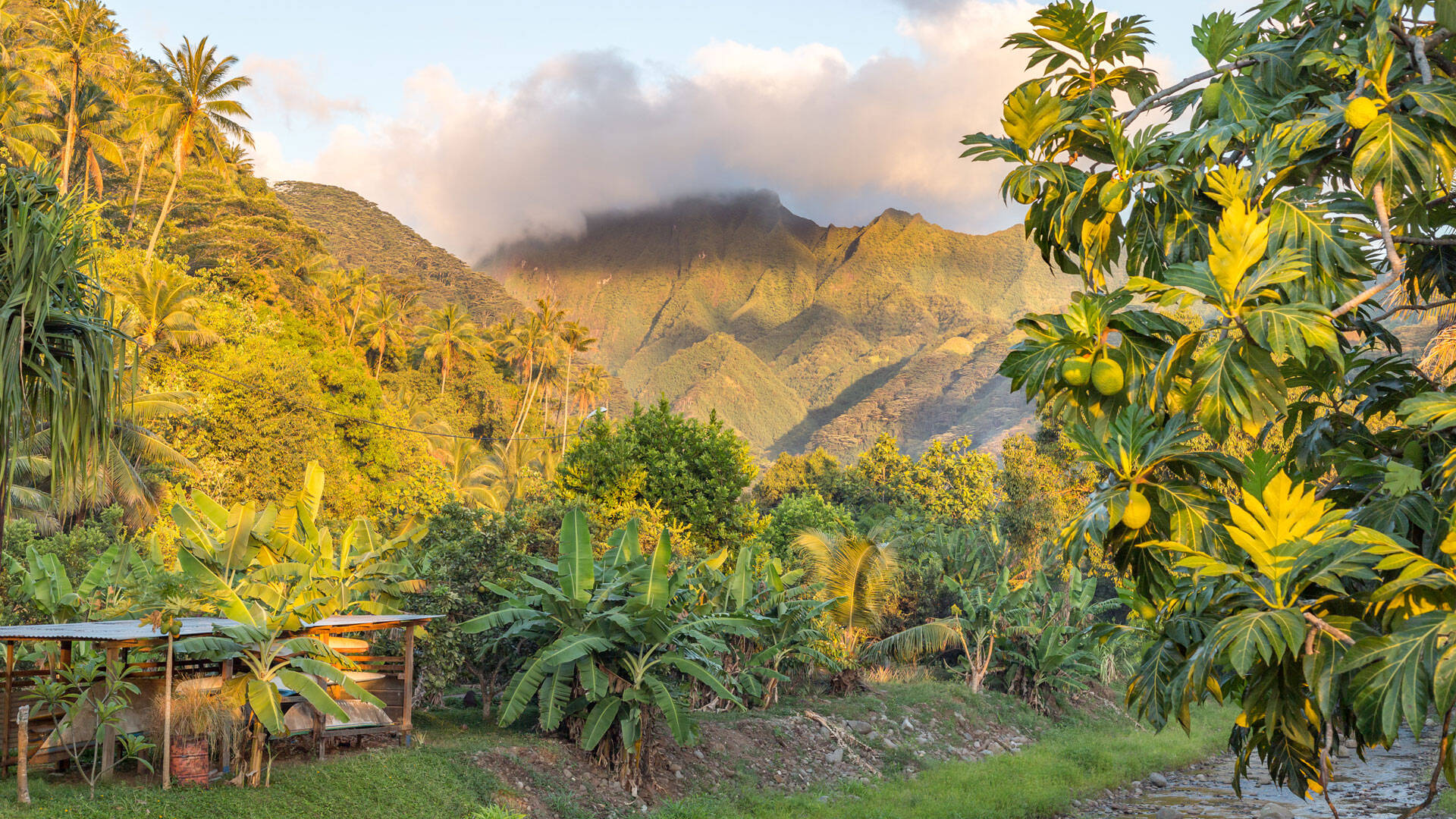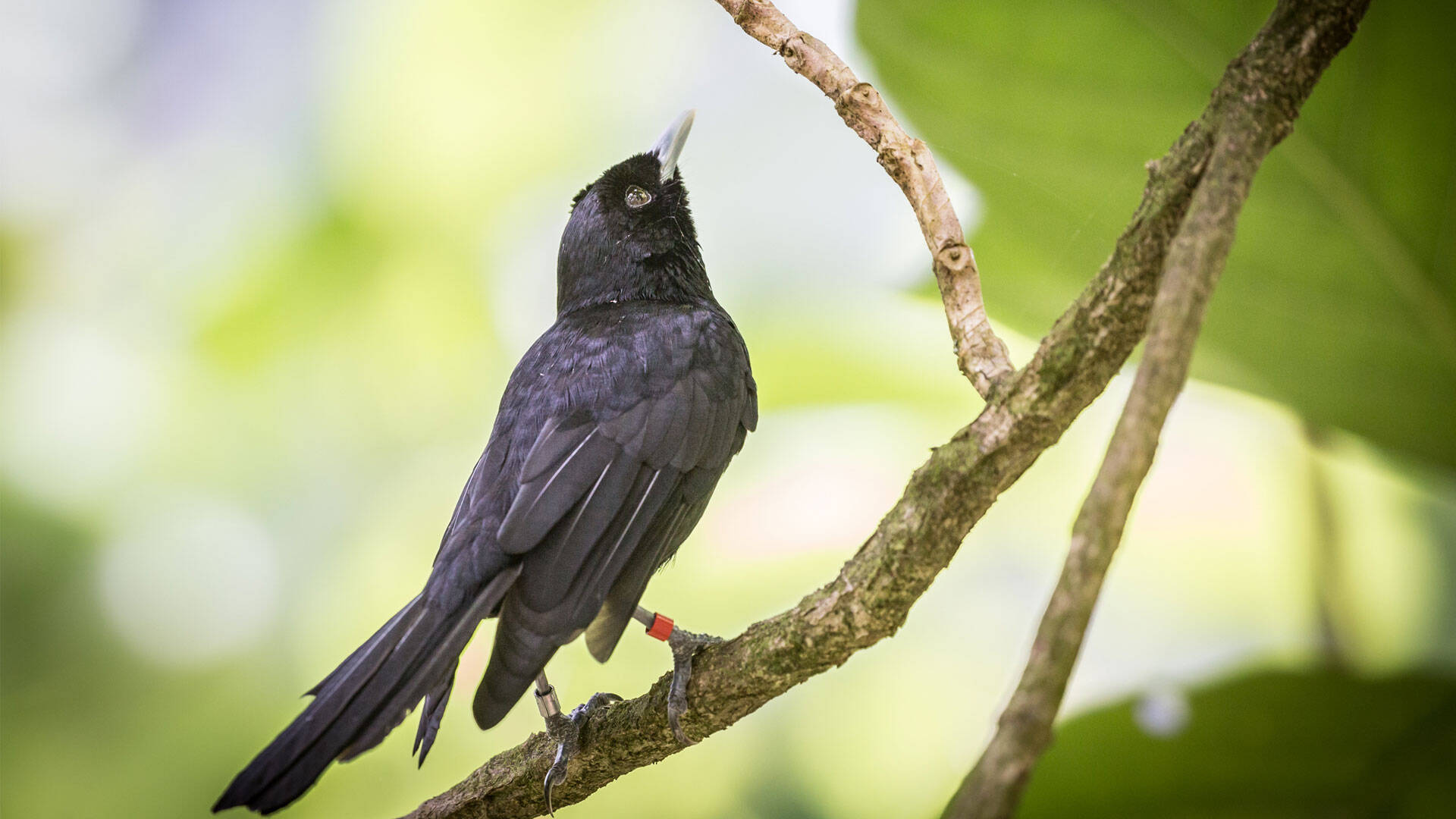The world population of the critically endangered Fatu Hiva monarch has risen to 20 birds following the successful rescue and hand-rearing of a now five-week-old chick by conservation partners the Polynesian Ornithological Society (SOP Manu) and Auckland Zoo.
On 2 February, as part of a SOP Manu/Auckland Zoo emergency conservation partnership to help save the endemic bird on French Polynesia’s Fatu Hiva Island, a five-day-old (14 gram) chick was removed from a precariously tilting tree nest to prevent it from falling.
The vital intervention for the wild chick and this most endangered of species (its population has just five breeding pairs!) is a first. It follows 10 unsuccessful breeding attempts by four Fatu Hiva pairs during 2023, and the partnership’s first ex-situ (outside of the wild) efforts to rear chicks from incubated eggs hatched in its purpose-built intensive management facility on the island.


